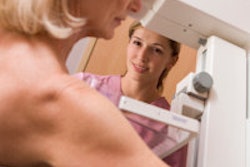Physicians who tested their skills in performing clinical breast exams using a new pressure-sensing breast model found they were not pressing hard enough to locate deep masses, according to an article in the New England Journal of Medicine.
Study co-author William McGaghie, PhD, from Loyola University Chicago Stritch School of Medicine, and colleagues used a prototype breast model with embedded sensors that can detect the location and depth of pressure as a physician palpates the model. The researchers used four models: two had masses near the surface and two had masses deep inside the breast, near the chest wall (NEJM, February 19, 2015, Vol. 372:8, pp. 784-786).
McGaghie and colleagues recruited 553 physicians at three annual conferences in 2013 and 2014: 136 at the American Society of Breast Surgeons meeting, 236 at the American Academy of Family Physicians meeting, and 181 at the American College of Obstetricians and Gynecologists meeting. The team asked these physicians to perform a simulated clinical breast exam under conditions similar to an office visit for a symptomatic patient.
Physicians who pressed with a force of less than 10 newtons were at significant risk of missing deep-tissue masses, the researchers found. (One newton is equivalent to the weight of a medium-sized apple.) But if the mass was near the surface, accuracy did not improve by applying more force, according to McGaghie and colleagues.
"Since variations in force cannot be reliably measured by means of human observation, our findings underscore the potential for sensor technology to add value to existing, observation-based assessments of clinical performance," the group concluded.


















